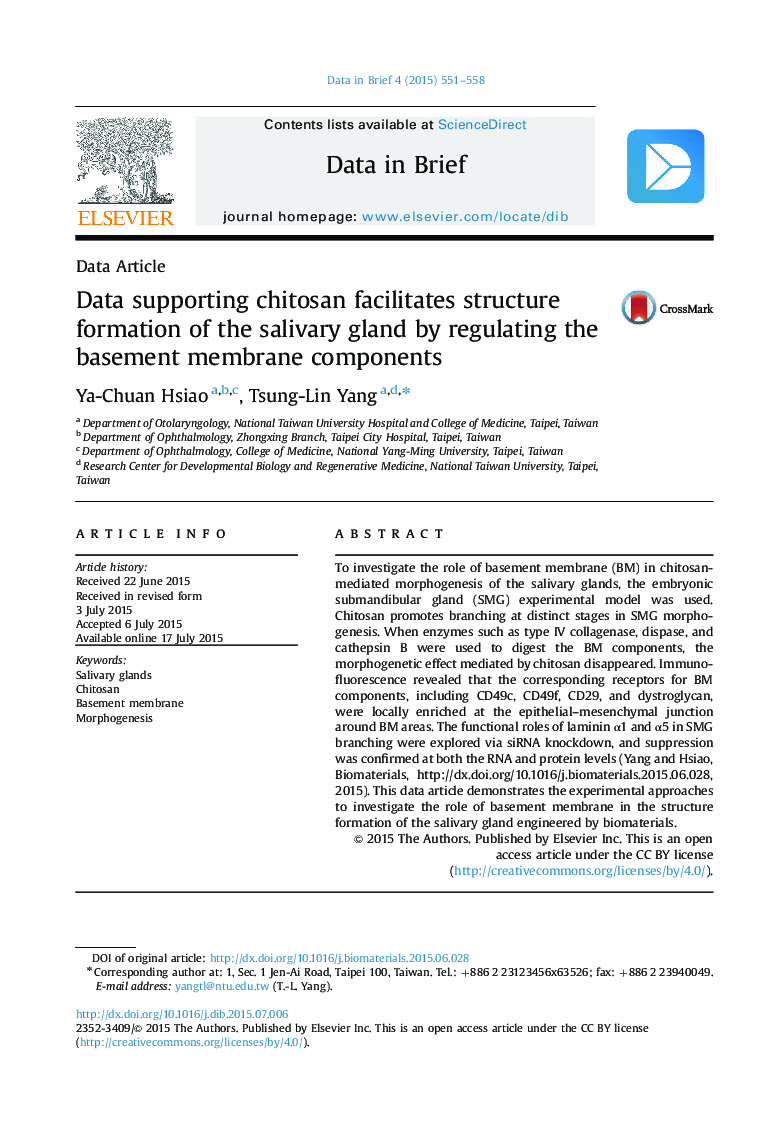| Article ID | Journal | Published Year | Pages | File Type |
|---|---|---|---|---|
| 175122 | Data in Brief | 2015 | 8 Pages |
To investigate the role of basement membrane (BM) in chitosan-mediated morphogenesis of the salivary glands, the embryonic submandibular gland (SMG) experimental model was used. Chitosan promotes branching at distinct stages in SMG morphogenesis. When enzymes such as type IV collagenase, dispase, and cathepsin B were used to digest the BM components, the morphogenetic effect mediated by chitosan disappeared. Immunofluorescence revealed that the corresponding receptors for BM components, including CD49c, CD49f, CD29, and dystroglycan, were locally enriched at the epithelial–mesenchymal junction around BM areas. The functional roles of laminin α1 and α5 in SMG branching were explored via siRNA knockdown, and suppression was confirmed at both the RNA and protein levels (Yang and Hsiao, Biomaterials, http://dx.doi.org/10.1016/j.biomaterials.2015.06.028, 2015). This data article demonstrates the experimental approaches to investigate the role of basement membrane in the structure formation of the salivary gland engineered by biomaterials.
